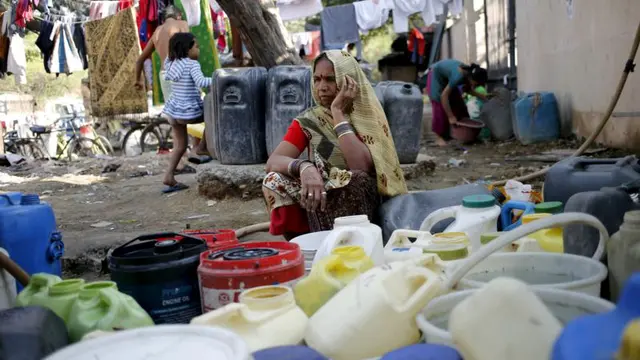At least 10 people have been killed and 150 others injured since caste-related violence broke out in the northern Indian state of Haryana, a senior police official said Sunday.
Despite a curfew being imposed in several parts of the state, which shares its border with Delhi, and the Indian Army being deployed, the violence has been continuing, with angry protesters of the Jat community taking to streets everyday to block the National Highway and railway tracks.
On Saturday, the protesters even set fire to several vehicles, including police jeeps, as well as some buildings in the state's Rohtak and Jhajjar districts, demanding reservation in government jobs and educational institutions.
In fact, Jat protests even reached Delhi, and the northern state of Punjab, Himachal Pradesh and Jammu and Kashmir. Haryana Chief Minister Manohar Lal Khattar has already said that the government is ready to agree to the demands of the protesters "within the ambit of the constitution."
Although the state government has appealed for calm and promised to look into their demands, the protesters have so far refused to back down.
The Jats are an agricultural community, currently listed as upper caste, who are unhappy about India's caste-based reservation system and herein lies the acrimony.
They say that the quota system puts them at a disadvantage in government jobs and in state-run educational institutions.
The Jat community wants job quotas similar to those granted to those in the lower castes, otherwise they want that the quota system be scrapped completely by the Indian government.
While some say that caste-based reservation in India dates back to the 2nd century B.C. when the upper castes enjoyed reservation, the country's current reservation system actually has a long history and has often been debated before and after India's independence from Britain in 1947.
But while the concept of untouchability was not practiced uniformly throughout the country, the common form of caste discrimination existed in India and the scheduled castes were the primary targets of the practice, which is now outlawed by the Constitution of India.
Primarily after independence, there were some major changes in favor of the scheduled castes, scheduled tribes and other backward castes. One of the most important changes took place in 1979 when the Mandal Commission was set up to assess the situation of what were deemed to be the socially backward classes.
In 1990, then Indian Prime Minister V.P. Singh announced that 27 percent of government positions would be set aside for other such backward castes in addition to the 22.5 percent already set aside for the scheduled castes and scheduled tribes.
Today, out of 543 seats in the Indian Parliament, 84 (15.47 percent) are reserved for scheduled castes or Dalits, and 47 (8.66 percent) for scheduled tribes. However, there are state laws that exceed this limit and these are under litigation in the Supreme Court.
"The quota-based reservation system was created earlier for the uplifting of India's socially and financially backward people. But now Jats want reservation, which shows that the quota system is increasingly becoming an obstacle for the upper castes," explained Charu Bose, a professor at Delhi University. Enditem
 简体中文
简体中文




